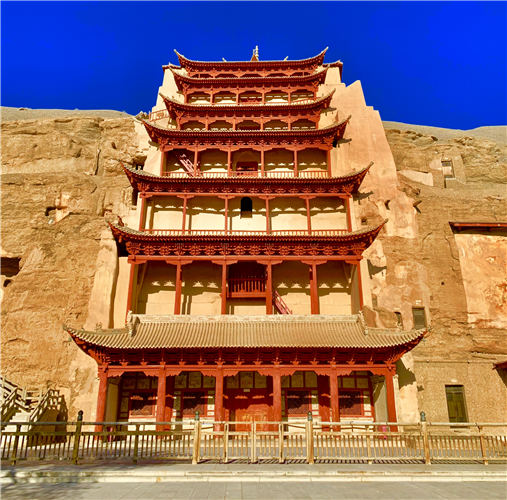 |
|
The Mogao Grottoes are a compound of caves carved into the mountains over a millennia and adorned with Buddhist frescoes and sculptures. [Photo by Erik Nilsson/China Daily] |
Cave No 249's Western Wei Dynasty (535-556) murals and Qing-era (1644-1911) sculptures depict Indians interacting with local ethnic groups. A Buddha wears a Greek robe and stands next to a Hindu god with 13 heads and a serpentine body.
No 292's Sui Dynasty (581-618) Buddhas don Persian clothing dyed with Afghan pigments that were then more valuable than gold.
Cave 323's frescoes convey the Silk Road's origin story by portraying the travels of envoy Zhang Qian, whose westward explorations over 2,000 years ago led to the trade route's creation.
Indeed, Mogao's treasure trove of historical riches makes it an archeological Aladdin's cave. (The original fable is actually set in an unspecified Chinese desert settlement instead of in the Middle East, as is commonly believed.)
Dunhuang's legacy as an intersection of civilizations has survived beyond the centuries of the Silk Road.
And it seems poised to flourish further with the Belt and Road Initiative, especially after the second BRI forum in Beijing, which opens on Thursday.
Indeed, visitors will discover the desert city is still being shaped by the sands of time and the crossroads of cultures.
And they may find explorations of the area are best undertaken atop the backs of camels, as has remained customary for millennia and will likely continue in the years to come.